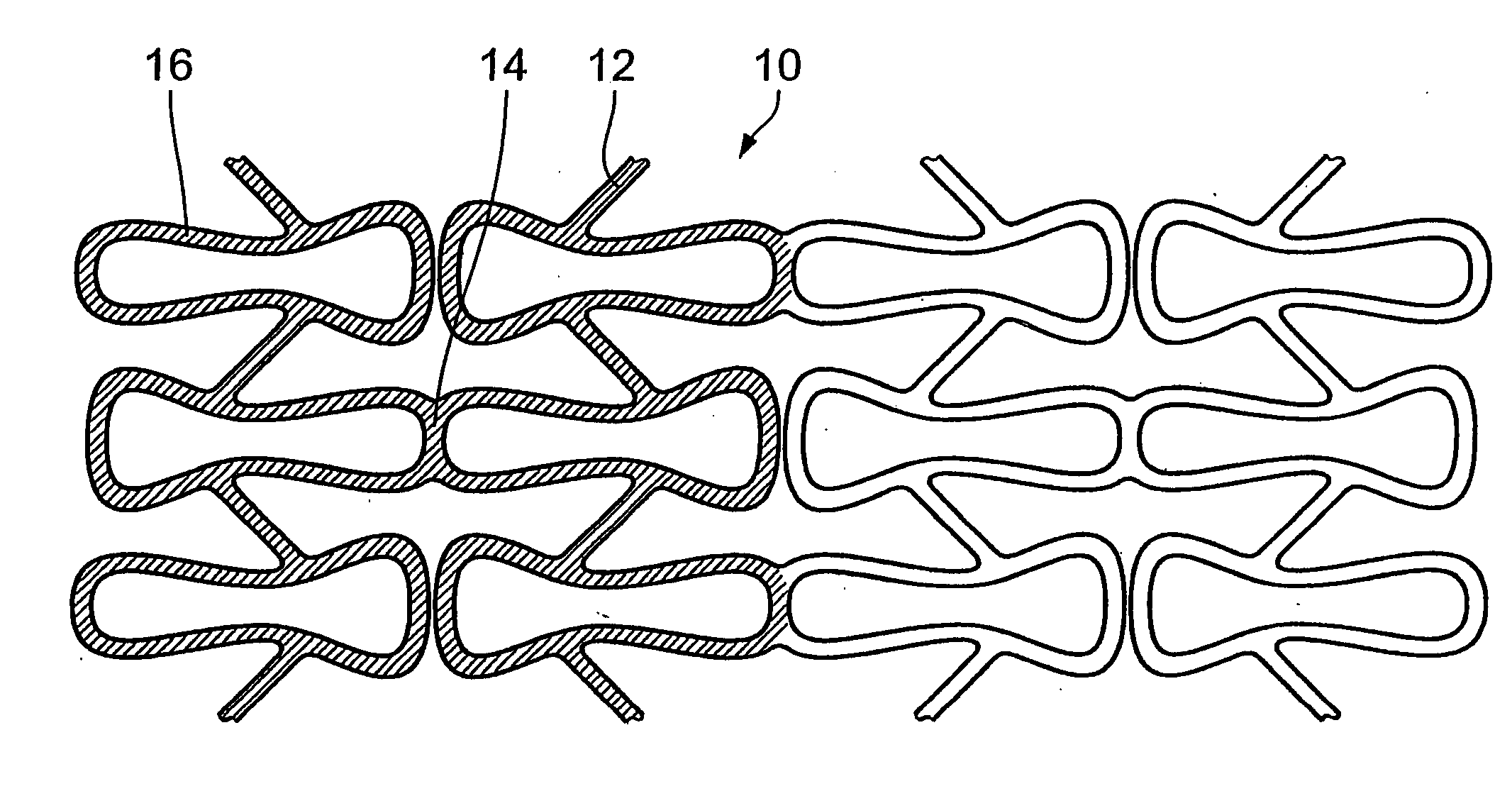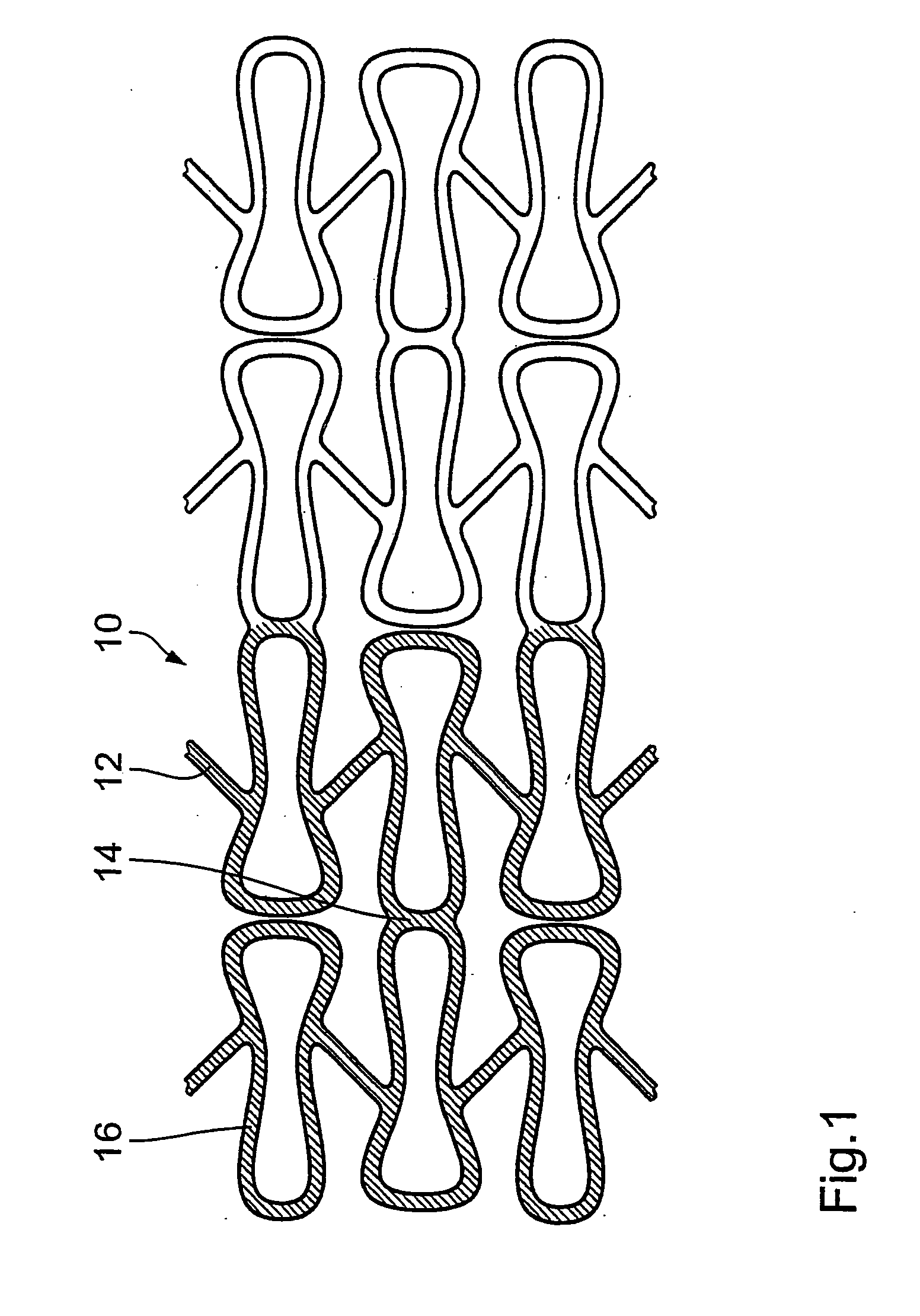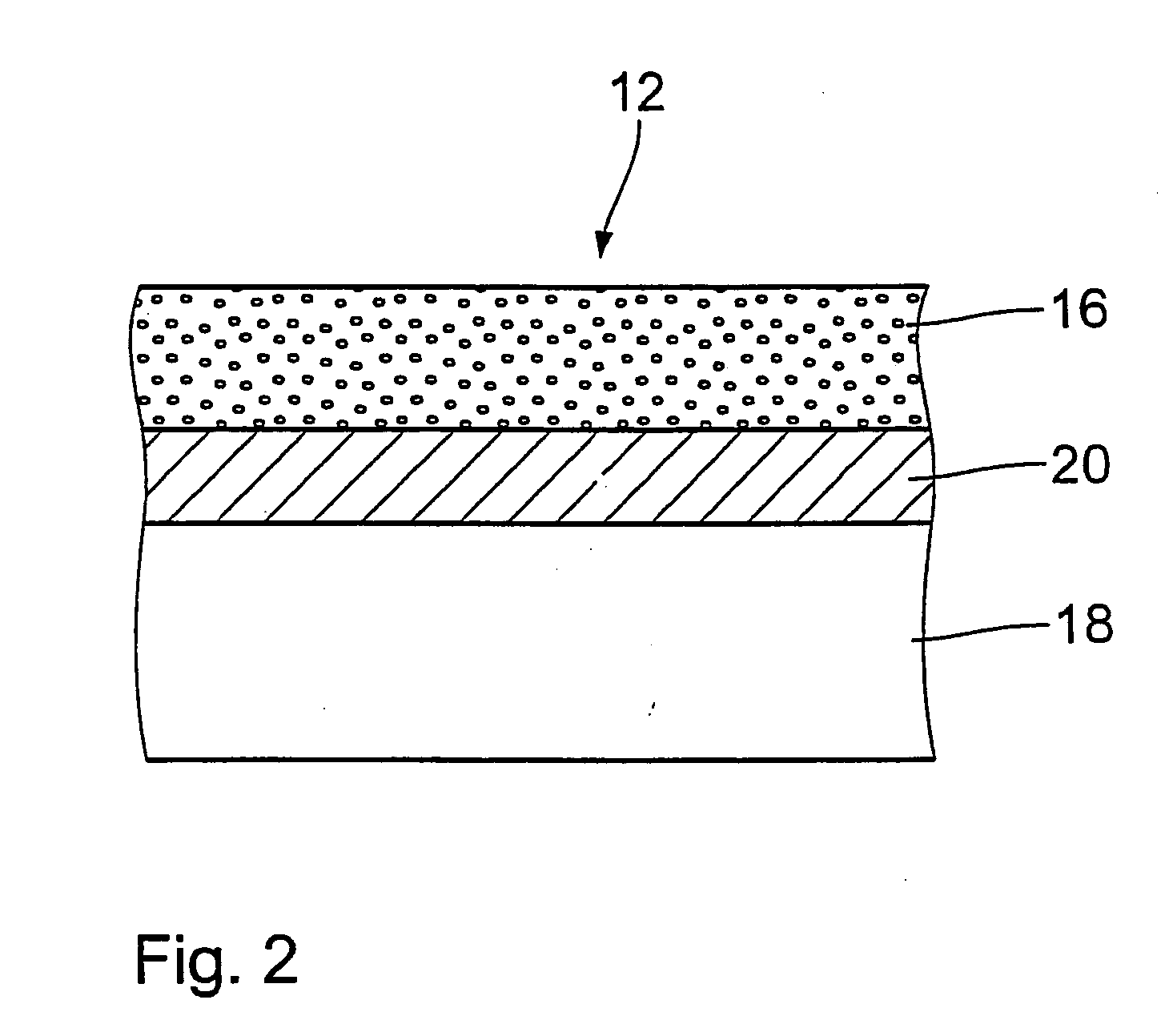Stent with polymeric coating
- Summary
- Abstract
- Description
- Claims
- Application Information
AI Technical Summary
Benefits of technology
Problems solved by technology
Method used
Image
Examples
Embodiment Construction
[0036] FIG. 1 is a diagrammatic view of a portion of an endovascular implant, here in the form of a stent 10. The stent 10 comprises a plurality of structural elements 12 which--as illustrated in this specific example--form a lattice-like pattern about the longitudinal axis of the stent 10. Stents of this kind have long been known in medical technology and, as regards their structural configuration, can vary to a high degree. What is of significance in regard to the present invention is that the stent 10 has an outwardly facing surface 14, that is to say a surface which is directed towards the vessel wall after implantation. In the expanded condition of the stent 10 that outward surface 14 should involve an area coverage which is as large as possible in order to permit uniform active substance delivery. In regard to the mechanical basic structure, distinctions are to be drawn in terms of the configuration involved: concentration of the deformation to a few regions or uniform deforma...
PUM
| Property | Measurement | Unit |
|---|---|---|
| Irradiation dose | aaaaa | aaaaa |
| Irradiation dose | aaaaa | aaaaa |
| Irradiation dose | aaaaa | aaaaa |
Abstract
Description
Claims
Application Information
 Login to View More
Login to View More - R&D
- Intellectual Property
- Life Sciences
- Materials
- Tech Scout
- Unparalleled Data Quality
- Higher Quality Content
- 60% Fewer Hallucinations
Browse by: Latest US Patents, China's latest patents, Technical Efficacy Thesaurus, Application Domain, Technology Topic, Popular Technical Reports.
© 2025 PatSnap. All rights reserved.Legal|Privacy policy|Modern Slavery Act Transparency Statement|Sitemap|About US| Contact US: help@patsnap.com



